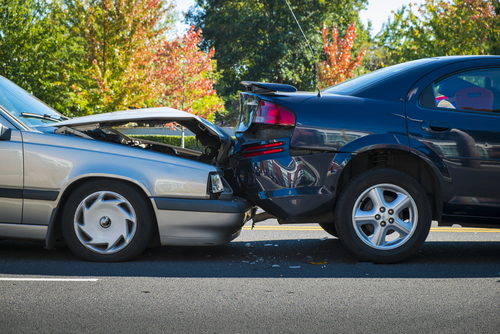Rear-end crashes are among the most common types of car accidents, often occurring in heavy traffic or at intersections. These accidents typically involve one vehicle colliding with the back of another vehicle, usually because the driver was following too closely or was unable to stop in time. While some rear-end crashes are minor, others can cause serious injuries and significant property damage.
If you’ve been injured in a crash and would like to learn your legal options, don’t hesitate to reach out. At Shapiro, Washburn & Sharp, we can evaluate your case and determine your recourse for recovering damages. Call us today at 833-997-1774 for a free consultation.
What Are the Common Causes of Rear-End Crashes?
Rear-end crashes can be caused by a variety of factors, many of which involve driver behavior or environmental conditions. Common causes include:
Tailgating
One of the most frequent causes of rear-end crashes is following another vehicle too closely, often referred to as tailgating. Drivers who tailgate have less time to react to sudden stops or changes in traffic conditions, increasing the risk of a collision.
Distracted Driving
Drivers who are distracted by their phones, GPS devices, or other in-car activities are less likely to notice when traffic is slowing down or stopping. This lack of attention can result in a rear-end crash.
Weather Conditions
Poor weather conditions, such as rain, snow, or fog, can reduce visibility and make roads slippery. In these conditions, drivers may have difficulty stopping in time, leading to rear-end accidents.
Sudden Stops
A vehicle that suddenly stops without warning, especially in heavy traffic, can cause the car behind it to collide with its rear end. This is more common in stop-and-go traffic or at intersections with brief green lights.
Mechanical Failures
In some cases, mechanical failures, such as brake malfunctions or tire blowouts, can prevent a driver from stopping properly and result in a rear-end crash.
Understanding these causes can help drivers take steps to avoid rear-end crashes by practicing safe driving habits and being aware of their surroundings.
What Types of Injuries Are Common in Rear-End Crashes?
Rear-end crashes, while often considered minor, can cause a wide range of injuries, particularly if the crash occurs at higher speeds. Some of the most common injuries in rear-end crashes include:
Whiplash
Whiplash is one of the most common injuries in rear-end accidents. It occurs when the head is suddenly and forcefully jerked forward and backward, straining the neck muscles and ligaments. Whiplash can cause pain, stiffness, headaches, and long-term neck problems.
Back and Spine Injuries
Rear-end crashes can also result in serious back and spinal injuries, including herniated discs, fractured vertebrae, or nerve damage. These injuries can cause chronic pain and may require surgery or physical therapy for recovery.
Head Injuries
Even if a driver or passenger is wearing a seatbelt, the sudden impact of a rear-end crash can lead to head injuries, such as concussions or skull fractures. Head injuries can range from mild to severe and may result in long-term cognitive or physical impairments.
Chest Injuries
The force of the impact can also cause chest injuries, particularly if the seatbelt does not properly distribute the force across the body. Rib fractures, bruised lungs, or damage to internal organs can occur in more severe crashes.
Knee and Leg Injuries
The force of a rear-end collision can cause the knees and legs to slam into the dashboard or steering wheel, leading to injuries such as broken bones, bruises, or sprains.
Even low-speed rear-end collisions can cause significant injuries, especially if the vehicle occupants are not expecting the impact.
What Are the Legal Implications of a Rear-End Crash?
In most cases, the driver who rear-ends another vehicle is considered at fault, especially if they were tailgating, driving recklessly, or failing to pay attention to traffic conditions. However, there are exceptions. If the lead vehicle suddenly stops or makes an unexpected maneuver, or if the rear driver was unable to stop due to mechanical failure or poor road conditions, liability may be shared or disputed.
In a rear-end crash, the at-fault driver is typically responsible for the damages and injuries caused in the accident. This can include property damage to the vehicle, medical expenses for any injuries, lost wages if the victim is unable to work, and pain and suffering.
How Can Our Personal Injury Firm Help?
At Shapiro, Washburn & Sharp, we have decades of experience handling personal injury claims. We understand how to navigate the legal process and work with you to maximize the value of your car accident case.
If you’ve been injured in a motor vehicle accident through no fault of your own and want to talk about your options, we are here to help. We’d be more than happy to discuss your case, your options, and the best plan of attack to ensure that you are fairly compensated and taken care of for your injuries.
Call us at 833-997-1774 to schedule a free consultation, and let us help you get the compensation you deserve.
